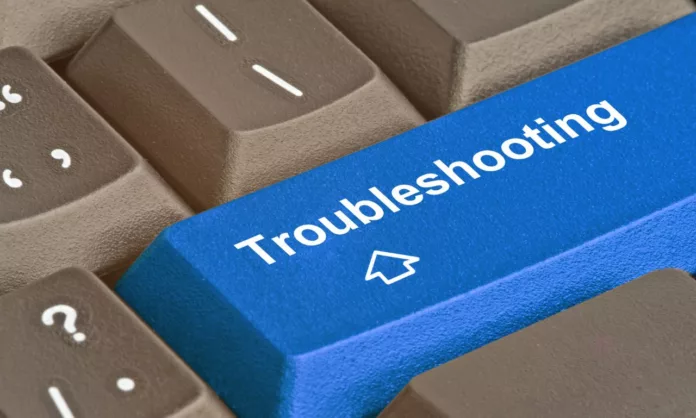Troubleshooting is an essential process in various fields, from information technology to automotive repair, electrical systems, and beyond. It involves identifying, diagnosing, and resolving problems or issues that impede the normal operation of a system or device. While troubleshooting is a critical skill, it’s not always a straightforward task. Many variables can make it a complex and challenging process. In this article, we will delve into the world of troubleshooting, dissecting the most difficult aspects, and exploring strategies to overcome these challenges.
Table of Contents
Identifying the Root Cause
Identifying the root cause of a problem is often considered the most challenging aspect of troubleshooting. This is especially true in complex systems with numerous interconnected components. For instance, in IT, when a network goes down, it might be tempting to blame a specific piece of hardware or software. However, the true cause could be buried deep within the system, making it difficult to identify without a systematic approach.
To tackle this challenge, troubleshooting experts often employ techniques like the “Five Whys,” which involves repeatedly asking “why” to drill down to the fundamental issue. Additionally, the use of diagnostic tools and expertise in the specific domain can be invaluable in root cause analysis.
Intermittent Problems
Intermittent problems are issues that occur sporadically and are often the most frustrating to troubleshoot. Whether it’s a flickering light bulb, an intermittent Wi-Fi connection, or a misbehaving vehicle, these problems can be elusive because they do not manifest consistently. Troubleshooters may not be present when the problem occurs, making it even more challenging.
Addressing intermittent issues often involves careful documentation, data logging, and patience. Tools like event logs and monitoring systems can help capture information when the problem occurs, aiding in the troubleshooting process. Over time, pattern recognition and experience can also help in diagnosing these elusive issues.
Lack of Documentation
Troubleshooting is significantly hindered when there is a lack of proper documentation. Without documentation, it’s challenging to understand the system’s design, history, and any previous issues. In IT, this may include missing network diagrams or outdated system configurations. In the automotive industry, missing service records and maintenance schedules can complicate troubleshooting efforts.
To mitigate this challenge, organizations must emphasize the importance of documentation. Proper documentation should encompass system design, configurations, maintenance logs, and previous troubleshooting efforts. Regular updates and training for personnel responsible for maintenance and troubleshooting can help maintain an accurate and up-to-date record.
Complex Systems
In today’s world, systems have become increasingly complex. From the internet infrastructure to advanced automobiles and even household appliances, the integration of technology has led to intricate and multifaceted systems. While these systems bring numerous benefits, they also present significant challenges when troubleshooting is required.
Navigating complex systems necessitates a deep understanding of the system’s architecture, components, and interactions. Troubleshooters must be well-versed in the system’s inner workings and have access to the appropriate diagnostic tools. Furthermore, collaboration among experts from different domains may be required to address multifaceted issues effectively.
Human Error
In many troubleshooting scenarios, human error can complicate matters. Whether it’s an accidental misconfiguration of a software application or a mistake made during maintenance, humans are fallible. Identifying and rectifying errors introduced by humans can be challenging because they may not be readily apparent.
To tackle human error, organizations must prioritize training and awareness. Employees should be educated about potential pitfalls and best practices to minimize human-induced problems. Automation and quality control mechanisms can also be implemented to reduce the likelihood of human error.
Limited Resources
Troubleshooting often takes place under constraints, whether it’s time, budget, or personnel. Limited resources can make it particularly challenging to address complex problems effectively. For example, a company may have to resolve a network issue within a tight timeframe, or a homeowner may need to fix a critical appliance with a restricted budget.
To overcome resource constraints, prioritization and efficient use of available resources are crucial. This might involve conducting a cost-benefit analysis to determine which issues should be addressed first or exploring alternative, cost-effective solutions.
Unpredictable Environmental Factors
In fields like agriculture, aviation, and environmental science, unpredictable environmental factors can pose significant challenges for troubleshooting. Weather conditions, ecosystem changes, and other external factors can affect the normal operation of systems and devices.
Addressing environmental factors requires adaptation and preparedness. Monitoring systems and predictive analytics can help anticipate environmental changes and their potential impact. In some cases, redundancy and backup systems may be employed to ensure continued operation in the face of environmental uncertainty.
Software and Firmware Issues
In the digital age, software and firmware problems are common sources of troubleshooting challenges. Software bugs, compatibility issues, and firmware updates gone awry can disrupt operations in various sectors, from consumer electronics to industrial automation.
Resolving software and firmware issues often involves a combination of debugging, patching, and software updates. Collaboration with software developers and staying informed about known issues and updates are essential to mitigating these challenges.
Conclusion
Troubleshooting is a vital skill in various industries, but it comes with its fair share of challenges. Identifying the root cause, dealing with intermittent problems, lacking documentation, managing complex systems, addressing human error, coping with limited resources, handling unpredictable environmental factors, and resolving software and firmware issues are some of the common obstacles troubleshooters face.
To excel in the troubleshooting process, individuals and organizations must invest in training, documentation, and the right tools. They should also foster a culture of continuous improvement, as troubleshooting often involves learning from past experiences and adapting to new challenges in an ever-evolving technological landscape. While troubleshooting can be daunting, mastering these challenges can lead to more efficient systems, improved operations, and enhanced problem-solving skills.

